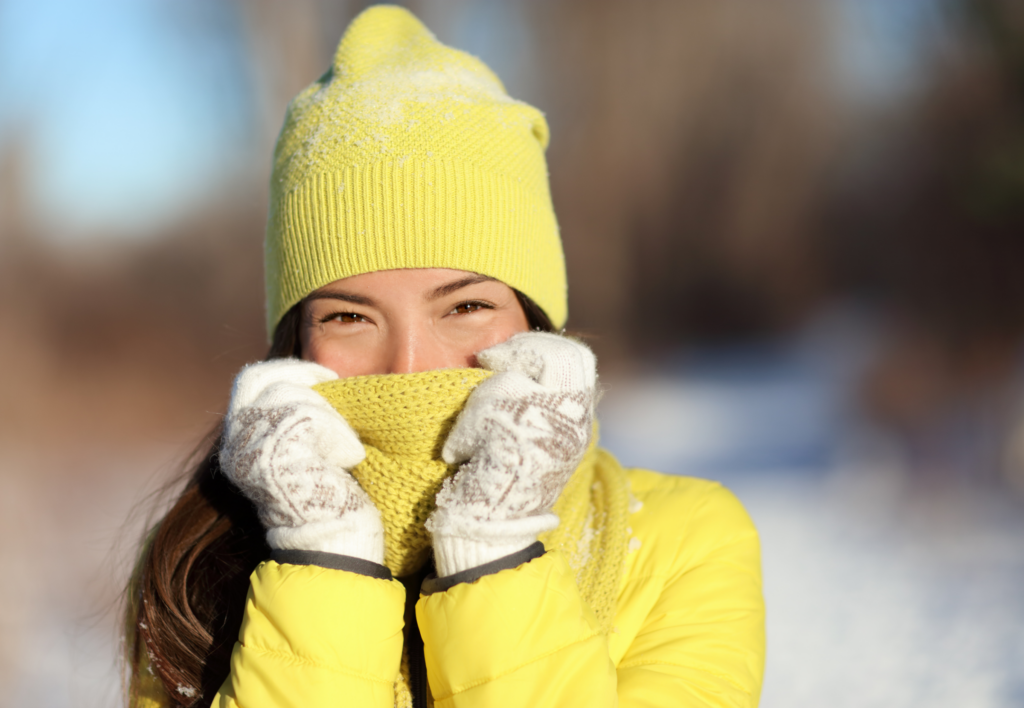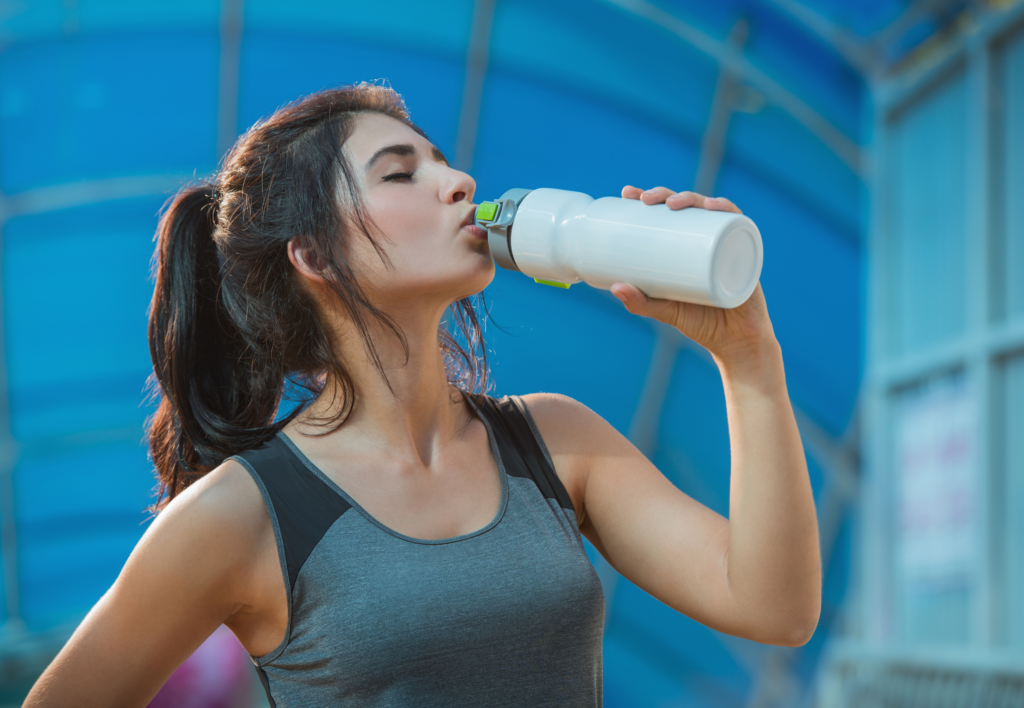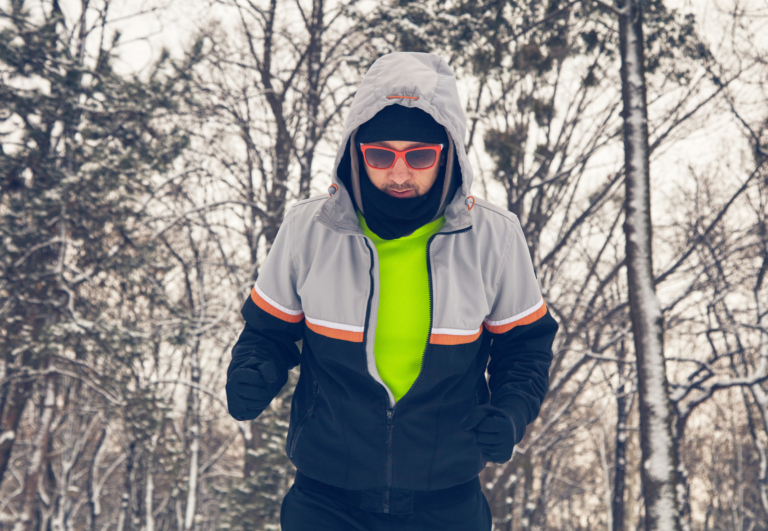5 Winter Running Myths Debunked: Separating Fact from Fiction
With temperatures dropping below freezing, it’s easy to let the chill in the air freeze our running routines as well.
But should it?
A swirl of myths about winter running can deter even the most dedicated pavement pounders. It’s time to separate the frosty facts from fiction and ensure that your training doesn’t go into hibernation just because the thermometer does.
In this post, we’ll tackle five common winter running myths by delving into the science and data behind them, empowering you with the knowledge you need to run right through winter with confidence.
Myth #1: You Shouldn’t Run Outside if the Temperature Drops Below Freezing
The belief that sub-freezing temperatures are a strict no-run zone is pervasive. The fear is that cold air can cause harm to your lungs, or that the body simply can’t handle the stress of exercising in the cold.
What the Science says: The human body is remarkably adaptable and can perform in extreme temperatures, both hot and cold, provided that it’s properly acclimated and protected. Concerns about lung damage from cold air are largely unfounded at freezing or slightly sub-freezing temperatures.
While cold air is often drier and can be uncomfortable to breathe, it doesn’t actually damage your respiratory system until the temperature falls well below freezing. The body has a natural defense mechanism: as you inhale, the air is warmed and humidified by the time it reaches your lungs.
According to research conducted at the University of Alberta, athletes could suffer damage to the lungs with prolonged exercise in temperatures of at or below -15 ºC (5 ºF). Another study conducted by the NIH recommends that athletes postpone or move training indoors if the outdoor temperature will reach or drop below -15 ºC (5 ºF).

What the Data Says: Studies have shown that with proper clothing and preparation, the risk of hypothermia or frostbite during exercise in cold weather is low. The key is to dress in layers that can be removed as your body heats up.
The American College of Sports Medicine recommends a moisture-wicking base layer, an insulating layer, and a protective outer layer to shield against wind and precipitation.
Furthermore, a report from the Mayo Clinic confirms that with the right gear and precautions, you can run safely in temperatures below freezing. It’s important to pay attention to wind chill, which can increase the risk of frostbite. The National Weather Service provides a Wind Chill Chart to help determine when it’s safe to run outside.
Myth #2: Indoor Running is Just as Effective as Outdoor Running
The treadmill is often championed as the perfect substitute for outdoor running, with the assumption that a mile on the machine equals a mile on the road.
What the Science says: While treadmills can mimic the act of running, they don’t replicate the full experience of outdoor running. One of the main differences lies in the lack of air resistance, which affects the energy cost of running. To counter this, setting the treadmill to a 1% incline can more accurately simulate outdoor running conditions.
Outdoor running requires the body to navigate and adapt to varied terrain, inclines, and weather conditions, which engages more muscle groups and can lead to increased strength and stability. A study from the “Journal of Sports Sciences” found that runners tend to have better stride variability and adaptability when running outside versus on a treadmill, which can reduce the risk of repetitive stress injuries.

What the Data Says: Research indicates that the psychological benefits of running outdoors, particularly in natural environments, are significant. A study in “Environmental Science & Technology” suggests that outdoor exercise is associated with increased energy and revitalization, as well as decreased confusion, anger, depression, and tension when compared to indoor exercise.
Moreover, running outdoors provides exposure to natural light, which is crucial for maintaining circadian rhythms and can help combat seasonal affective disorder (SAD), a type of depression that typically occurs during the winter months.
While the treadmill is a valuable training tool, especially when conditions outside are hazardous, it’s not a complete replacement for the benefits of outdoor running. Whenever possible, embrace the crisp winter air and the varied terrain it offers.
Myth #3: You Don’t Need to Hydrate as Much in Cold Weather
A common misconception is that the need for hydration decreases in colder climates because you’re not sweating as much, or at least, you don’t feel as thirsty as you do in the heat.
What the Science says: Despite the cooler temperatures, your body still loses a significant amount of fluids while running. The sweat evaporates more quickly in the cold, dry air, making it less noticeable, and the visible breath you see is actually water vapor being lost as you exhale. Moreover, the body works just as hard to maintain its core temperature in the cold as it does to cool down in the heat, which can lead to fluid loss.
A study published in the “Physiological Reviews” journal found that athletes may be at a higher risk of dehydration in cooler weather because the body’s thirst response is diminished by up to 40% even when dehydrated. This means you’re less likely to feel thirsty, even though your body needs fluids just as much.

What the Data Says: Dehydration can impair physical performance and cognitive function, which is critical to consider when running in potentially hazardous conditions where alertness is paramount. A study in the Human Kinetics Journals recommends drinking fluids at regular intervals before, during, and after a run, regardless of your thirst level, and suggests monitoring your urine color as a gauge for hydration.
Don’t wait until you’re thirsty to drink water when running in the cold. Maintain regular hydration habits as you would in warmer weather to ensure optimal performance and safety. Keep in mind that hydration isn’t just about water; it’s also important to replenish electrolytes lost through sweat.
Myth #4: Wearing Multiple Thick Layers is the Best Way to Stay Warm
When temperatures drop, the instinct might be to pile on thick, heavy clothing before heading out for a run. The idea is that the more layers you wear, the warmer you’ll be.
What The Science Says: The effectiveness of your winter running attire doesn’t depend on the thickness of the clothing but rather on the material and the layering system. The layering system works by trapping air between layers, which is then heated by your body, providing insulation.
The base layer should be made of moisture-wicking material to keep sweat away from your skin, the middle layer should provide insulation, and the outer layer should protect against wind and precipitation.
According to Healthline, clothes that are too thick and warm could cause you to get overheated once your body warms up during extended exercise.

What the Data Says: The key to staying warm and dry is not the quantity of the layers but their quality. According to the “Journal of Thermal Biology,” materials like polyester and polypropylene are excellent for base layers as they wick moisture away from the skin. Insulating layers should be breathable to allow moisture transfer, such as fleece or wool, and the outer shell should be wind and water-resistant.
Smart layering is far more effective than simply throwing on the thickest clothes you own. By choosing the right materials and layering strategically, you can maintain a comfortable body temperature without restricting movement or risking overheating.
Myth #5: Running in the Cold Weakens Your Immune System
Many people believe that exposure to cold weather while running can weaken your immune system, making you more susceptible to catching colds and other illnesses.
What The Science says: Contrary to this popular belief, moderate exercise, such as running, can actually strengthen your immune system. Physical activity can help to flush bacteria out of the lungs and airways, reduce the chance of getting a cold, flu, or other illness, and cause a temporary rise in white blood cells, which can help the body fight disease.
Research published by NIH suggests that regular moderate exercise can have a long-term positive effect on the immune system. In fact, it’s been shown that those who engage in regular physical activity have a lower incidence of infection compared to inactive individuals.
What the Data Says: While extreme exercise or overtraining can suppress the immune system temporarily, moderate exercise like running can actually give it a boost. According to another study at NIH, there is a clear and compelling link between physical activity and the human immune system. In the study, regular moderate-to-vigorous exercise for 60 minutes or less is now views as an important part of immune system and metabolic health.
It’s important, however, to balance exercise with adequate rest and recovery, as well as proper nutrition, to support overall health and immune function, particularly during the winter months when many illnesses are more prevalent.






